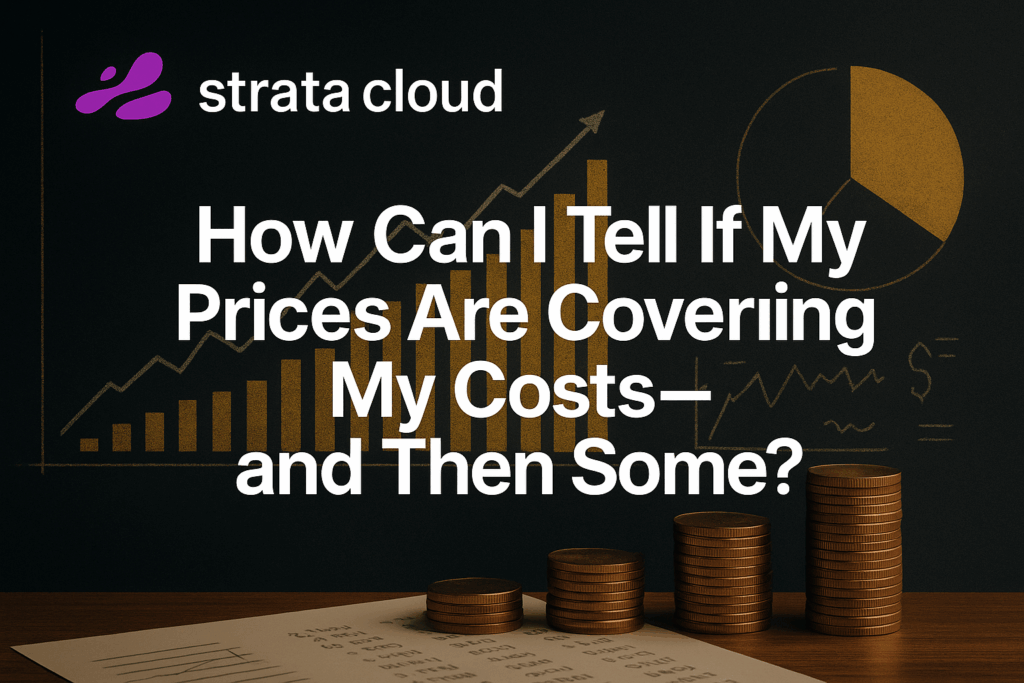Introduction
Setting the right price is one of the most critical decisions you’ll make as a business owner. Pricing too low sacrifices profitability; pricing too high risks driving customers away. The ideal price sits at the intersection of cost coverage and customer value perception. In this post, we’ll walk through a comprehensive, step-by-step approach to ensure your pricing strategy not only covers your fully loaded costs but also captures your rightful share of market value. By combining rigorous cost analysis, customer research, competitive benchmarking, and ongoing testing, you’ll land on price points that sustain healthy margins and drive growth.
1. Calculate Your Fully Loaded Cost
The first step is understanding precisely what it costs to deliver each product or service. “Fully loaded cost” goes beyond direct costs—materials and labor—to include allocated overhead and indirect expenses.
Direct Costs
- Materials: Raw inputs, components, packaging.
- Labor: Wages or contractor fees directly tied to production or service delivery, measured per unit or per hour.
Allocated Overheads
- Facilities: Rent, utilities, and maintenance are apportioned to each unit or hour of use.
- Administrative Salaries: Finance, HR, and management time allocated based on estimated percentages.
- Software and Tools: Subscriptions and licenses spread across relevant product lines.
- Other Indirects: Marketing support, customer service, depreciation, insurance, and amortization.
Example Calculation: If your total annual overhead is $240,000 and you produce 10,000 units per year, the overhead per unit is $24. Add direct costs (e.g., $20 materials + $10 labor = $30) for a fully loaded cost of $54 per unit.
2. Determine Your Cost-Plus Floor
With the fully loaded cost in hand, your next step is to establish a “cost-plus” floor price that ensures your desired gross margin.
Cost-Plus Pricing Formula
Floor Price = Fully Loaded Cost ÷ (1 – Desired Gross Margin %)
For a target gross margin of 40% on a $54 cost, the floor price is $54 ÷ (1 – 0.40) = $90. This price ensures you cover all costs and achieve at least a 40% margin.
Validating the Floor
- Ensure your cost data is up-to-date—review quarterly to capture changes in materials or labor.
- Factor in minimum viable shipment or service thresholds (e.g., bulk orders or minimum contract terms).
3. Uncover Your Value-Based Ceiling
Cost-plus establishes the minimum price you can charge without losing money. To capture upside, you need to understand the value you deliver to customers and their willingness to pay.
Customer Research
- Surveys and Interviews: Ask top clients what they value most about your product or service and how much they’d be willing to pay for incremental improvements.
- Conjoint Analysis: Present different feature-price combinations to statistically infer value thresholds.
Competitive Benchmarking
- Map your offerings against direct and indirect competitors—note price points, feature sets, and service levels.
- Identify where you offer superior value—faster turnaround, higher quality, unique features—and use that premium as justification for higher pricing.
Reference Pricing
Use “reference pricing” techniques by positioning premium tiers alongside standard packages. Customers anchor to the higher price when they see additional features, making the mid-tier option more attractive.
4. Conduct A/B Price Tests
Testing is the most reliable way to validate both floor and ceiling prices in real market conditions. A/B price testing lets you experiment with different price points across similar customer segments.
Designing the Experiment
- Segment Customers: Divide new prospects into two randomly selected groups with similar characteristics.
- Control vs. Test: Offer one group Price A (e.g., $90) and the other Price B (e.g., $100) and track conversion and average order value (AOV).
Analyzing Results
- Conversion Rate Impact: Does the higher price significantly reduce conversion?
- Revenue Per Visitor: Higher AOV may offset slight drops in conversion.
- Customer Feedback: Collect qualitative feedback post-purchase to understand perceived value.
Run tests for at least 2–4 weeks or until statistically significant results emerge. Adjust your floor and ceiling estimates based on insights.
5. Implement Tiered and Bundled Pricing
Leveraging both cost-plus and value-based insights, create tiered packages and bundles to cater to different customer segments and maximize revenue.
Tiered Pricing
- Basic: Covers cost-plus floor with limited features—ideal for price-sensitive customers.
- Professional: Mid-tier at the intersection of floor and ceiling, with added features and support.
- Enterprise: Premium tier with full feature set, priority support, and custom integrations—priced near the value ceiling.
Bundling Strategies
- Feature Bundles: Combine complementary features or services at a discount relative to a la carte pricing.
- Volume Bundles: Offer lower per-unit rates for bulk orders or multi-year commitments.
6. Communicate Price Changes Transparently
When updating prices, clear communication is critical to maintain trust and minimize churn. Frame changes around the additional value customers receive.
Best Practices
- Provide advance notice (30–60 days) of upcoming price changes.
- Highlight new features, improved service levels, or enhanced support, justifying the increase.
- Offer grandfathering options or loyalty discounts for existing customers.
7. Monitor and Iterate
Pricing is not “set and forget.” Continuously monitor key metrics—gross margin, churn rate, customer lifetime value—and iterate on your strategy.
Key Metrics to Track
- Gross Margin %: Ensure profitability targets are maintained.
- Churn and Retention: Watch for rate shifts after price changes.
- Average Revenue Per User (ARPU): Track over time to gauge upward pricing pressure.
Use quarterly business reviews to revisit your cost assumptions, value propositions, and competitive landscape. This disciplined cadence keeps your pricing aligned with market realities and cost dynamics.
Conclusion
By systematically calculating fully loaded costs, establishing cost-plus floors, uncovering value-based ceilings, running A/B tests, and deploying tiered packages, you’ll build a robust, data-driven pricing strategy. Transparent communication and ongoing monitoring ensure your prices continue to cover costs—and then some—while delivering clear value to customers. Implement these seven steps to transform pricing from a guessing game into a strategic lever for profitability and growth.

